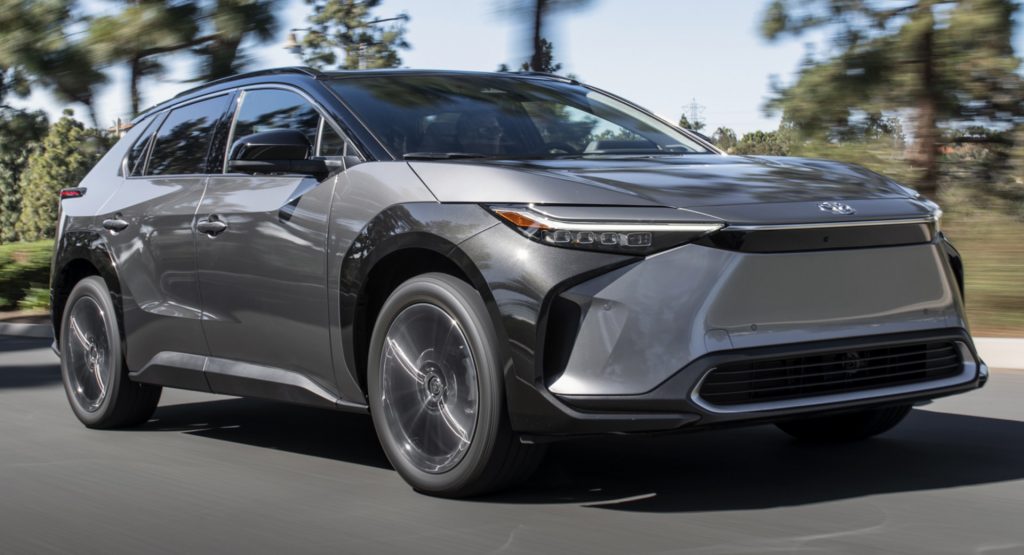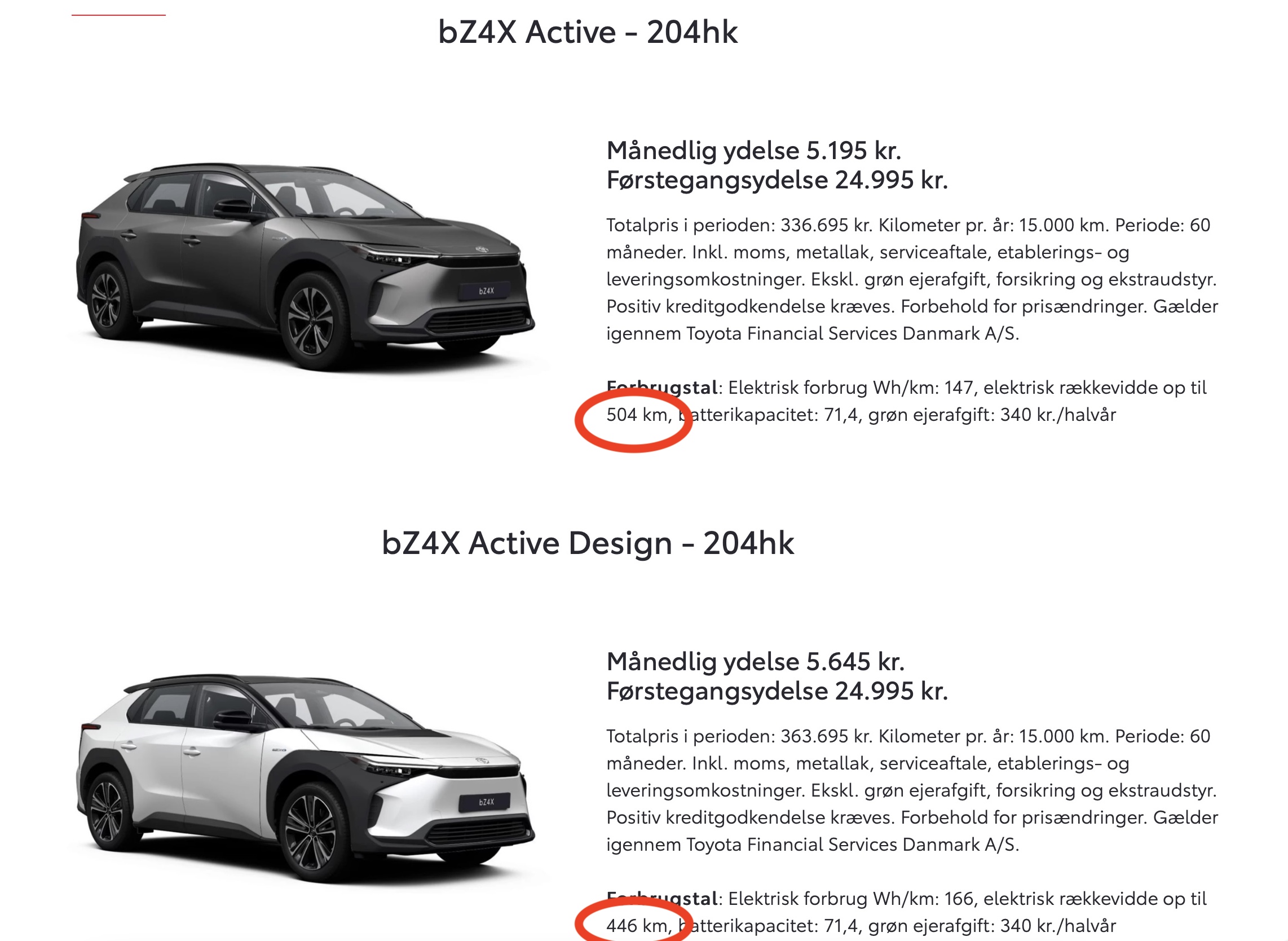Toyota’s bZ4X hasn’t had the easiest start in life. First, production was halted because the wheels could fall off, and then the Biden Administration changed the EV tax credit system to only benefit cars manufactured in North America, which the Japanese-built bZ and its Subaru Solterra twin aren’t.
And now questions are being asked about the validity of Toyota’s electric driving range figures. In tests carried out by Scandinavian journalists the bZ4X managed only half as many miles as the company claims, prompting Toyota in Europe and Japan to open a joint investigation.
Danish magazine FDM tested two- and all-wheel drive versions of the electric Toyota SUV and both failed to hit their range targets by literally (dozens of) miles. The two-wheel drive bZ has an official WLTP range of 313 miles (504 km) but could only travel 153 miles (246 km) before needing a charge, meaning it delivered less than 49 percent of its claimed range. The all-wheel drive version fared even worse, throwing in the towel after just 134 miles (215 km) when Toyota’s WLTP figures say it should be good for 287 miles (461 km). That equates to less than 47 percent of the claimed range.
Related: Toyota BZ3 Is A Chinese-Market Tesla Model 3 Rival With A 373-Mile Range
The elephants in the room here are that WLTP figures are notoriously optimistic and that the test was carried out in Scandinavia in winter, so hardly ideal conditions for a battery. But we’re not talking sub-zero temperatures; the range numbers were achieved at 4 deg C (39 F). More importantly, the Toyotas performed worse than other electric cars tested by the magazine in similar conditions. A Tesla Model Y Long Range, for instance, was measured at 221 miles (355 km) against a 315-mile (507 km) official figure, meaning it achieved 70 percent of its WLTP rated mileage. And both the Mercedes EQA and Volkswagen ID.4 weren’t far behind, at 67 percent each.
What Does Toyota Say?
Toyota GB told Carscoops that Toyota Europe and Toyota HQ in Japan were carrying out an investigation into the findings, which aren’t isolated numbers, and tally with figures from Norwegian and Swedish media, from Norwegian customers, and from our own experience with the bZ4X.
But in replying to FDM’s findings, a Danish Toyota spokesman suggested that the discrepancy could be down to how much “reserve” the SUV has in its battery pack when the car’s dashboard is showing zero miles remaining. Though it’s unlikely that the bZ4X has 150 miles up its sleeve, it got us wondering how much spare range the average EV has, and how much that figure varies from model to model.
Have you ever run an EV down below zero miles, and if so, how far have you dared to drive? Leave a comment and let us know.





